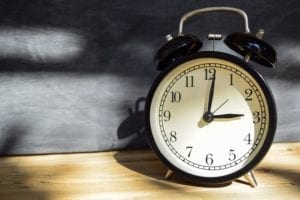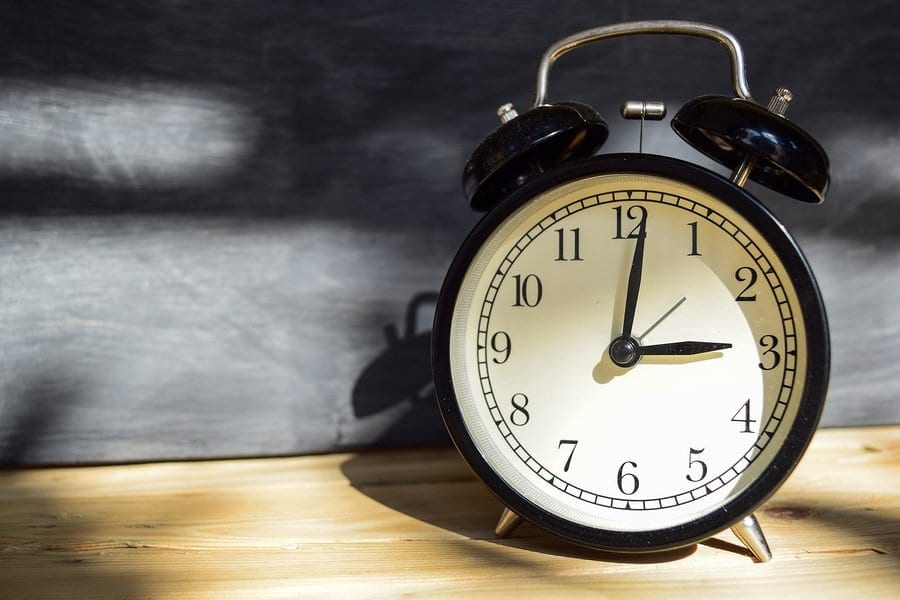It’s 3 pm and the very last thing you want to do is work. Your eyes are drooping, you’ve yawned three times in the past minute, and you would give anything to be back in bed, even though it’s light outside. If you’ve ever experienced this before, don’t worry…you’re not alone. It’s called the afternoon slump, and a lot of people deal with it every day. It can really throw a wrench in your motivation and productivity too. Is there a way to overcome it? Let’s see.
What is the “afternoon slump?”

There is no denying the afternoon slump…even the most motivated people can find themselves feeling tired by midday. The “afternoon slump” describes the sleepy and sluggish feeling that comes on in the afternoon, usually around 2 or 3 pm…and it can seriously impact your ability to get things done. There are a few different reasons people experience an afternoon slump, like dehydration, high levels of stress, poor eating habits (i.e. eating too many carbs that day), or it can also be an underlying metabolic disorder like pre-diabetes or insulin resistance. You probably know when you’re experiencing an afternoon slump, because you may feel fatigued and lethargic, yawn frequently, be a bit moody, crave carbs, and even have slight changes in vision.
How do you avoid an afternoon slump?
While there can be several potential causes for an afternoon slump, here are some actions you can take that can help prevent you from becoming tired and groggy in the afternoon. Our first tip is to spend a few minutes outside. Exposure to bright light, like sunlight, can increase feelings of wakefulness. Step outside and take a few deep breathes. Another tip is to take a quick nap after lunch if you are able – it can just be for 15-20 minutes. This short rest period can help to reduce sleepiness and make you more alert and responsive.
This next tip is a bit odd…chew gum! Yes, we’re serious. The simple act of chewing gum can increase alertness, improve work performance, and broaden your attention.¹
Another thing you can try is to get in some exercise (preferably outside). Exercise is one of the simplest things you can do to feel more alert. If you have the time, take a brief walk or head to the gym for a light workout. If your schedule does not allow for this quick gym time, try standing up and stretching your arms toward the ceiling, bend, and move for a few minutes, which can help to release the tension of sitting at a desk and staring at a screen all day.
One last tip to help you feel less groggy in the afternoon is to not eat a carb-laden lunch. Opt for a meal with protein, fruits, veggies, whole grains, and fiber, with minimal saturated fat.
Think green with no caffeine
Certain foods and drinks can also help ward off an afternoon slump. But instead of reaching for another cup of coffee or energy drink (or a candy bar – don’t chase that sugar high, it never lasts), we recommend trying a powdered green drink mix instead, which can provide a natural boost of energy by charging your metabolism. Stay away from those with added sugar and artificial flavors. Green drinks don’t need to taste like chocolate. Find one with a natural light taste, similar to green tea. Look for ones containing barley grass, wheatgrass, and other natural green nutrients.
 Barley grass contains vitamins A, C, E, beta-carotene, and B vitamins, and is also a rich source of potassium, calcium, iron, and magnesium. Barley grass is a natural detoxifier that protects the liver. It also supports healthy blood pressure, enhances immunity, improves digestion, has blood glucose supporting effects, and can even help to lessen fatigue.
Barley grass contains vitamins A, C, E, beta-carotene, and B vitamins, and is also a rich source of potassium, calcium, iron, and magnesium. Barley grass is a natural detoxifier that protects the liver. It also supports healthy blood pressure, enhances immunity, improves digestion, has blood glucose supporting effects, and can even help to lessen fatigue.
Juice-bar favorite wheatgrass, on the other hand, is a great source of vitamins A, C, and E as well as iron, magnesium, and amino acids. Wheatgrass is a powerful source of glutathione, known as the “master” antioxidant. Other studies suggest that wheatgrass may also support healthy cholesterol levels, and aid in balancing blood sugar.
Freshwater algae a.k.a. chlorella, has survived on earth for over two billion years. The secret to chlorella’s longevity is its fibrous outer wall. Although this defensive wall protects these single-cell algae, it also prevents the body’s ability to take advantage of chlorella’s detoxification benefits. Fortunately, scientists have found that breaking this wall releases chlorella’s natural ability to bind toxins and heavy metals through a process called chelation. Chlorella also boasts a wealth of vitamins including vitamins B1, B12, folic acid, C, and K. Plus, chlorella is a great source of minerals, essential fatty acids, protein, and fiber. Interestingly, a 2014 study showed that people who ingested chlorella each day for four weeks saw an increase in their peak oxygen intake, showing that chlorella might help increase aerobic endurance capacity.²
Why do I lack energy in the afternoon?
 The Circadian Rhythm plays a part in your afternoon slump. Also known as our ‘biological clock,’ our Circadian Rhythm is basically the compilation of body processes that control when we wake up and when we go to bed (or at least feel energized and sleepy). Lightness and darkness signal to a part of the brain that it is either time to wake up or go to sleep, triggering our production of certain hormones and other bodily changes that either rev us up or quiet us down. Our body produces the stress hormone cortisol when it’s time to wake up, and melatonin when it’s time to go to sleep. Our body temperature also warms up to wake us up and cools to make us feel sleepy. Our exact individual rhythms can vary, but most of us feel a strong shift and urge to wake up after sunrise and go to bed after sunset. It’s pretty common to think that our Circadian Rhythm only kicks in to make us tired after the sun goes down, but we actually also experience a natural dip in the afternoon. This mid-afternoon slump that leaves you sitting at your desk sleepy and a little lethargic is completely normal. Besides this, getting too little sleep on a regular basis can also contribute to an afternoon slump.
The Circadian Rhythm plays a part in your afternoon slump. Also known as our ‘biological clock,’ our Circadian Rhythm is basically the compilation of body processes that control when we wake up and when we go to bed (or at least feel energized and sleepy). Lightness and darkness signal to a part of the brain that it is either time to wake up or go to sleep, triggering our production of certain hormones and other bodily changes that either rev us up or quiet us down. Our body produces the stress hormone cortisol when it’s time to wake up, and melatonin when it’s time to go to sleep. Our body temperature also warms up to wake us up and cools to make us feel sleepy. Our exact individual rhythms can vary, but most of us feel a strong shift and urge to wake up after sunrise and go to bed after sunset. It’s pretty common to think that our Circadian Rhythm only kicks in to make us tired after the sun goes down, but we actually also experience a natural dip in the afternoon. This mid-afternoon slump that leaves you sitting at your desk sleepy and a little lethargic is completely normal. Besides this, getting too little sleep on a regular basis can also contribute to an afternoon slump.
Dehydration can also play a role. Fluids are vital for our energy levels. Even mild dehydration can leave you feeling tired, sluggish, and maybe a little moody. This can be an issue particularly for people who work desk jobs since we often lean on coffee and tea to get us through the day…pushing water to the side. Running errands, picking up and dropping off the kids; it is easy to forget to keep drinking water all day. Try to get in the habit of drinking half your body weight in ounces of water per day (a 120lb person can have up to 60 oz of water a day).
What causes an afternoon crash?
Besides the role your Circadian Rhythm plays in your afternoon crash, diet is also an important element, and can really affect your energy levels throughout the day. Something else that can cause an afternoon slump is a dip in blood sugar levels, which is tied to what you eat during the day. Foods that are made up mostly of sugar and carbs will fill you up, but leave you feeling shaky and tired later. After we eat too many “empty carbs” – foods that are high in sugar but low in protein – our blood sugar levels spike; when they plummet a few hours later, we experience a crash in our energy levels. So if you’re eating a bowl of fries or pasta and feeling tired around 3 pm, your meal could be the culprit.
It’s important to remember that the afternoon slump is a completely natural thing. Just try not to let it catch up with you too often. By keeping some of the steps listed above in mind, you can help to make your afternoon slump less severe, and prevent those sleepy, sluggish feelings from slowing down your day.
References
- https://www.ncbi.nlm.nih.gov/pmc/articles/PMC4449949/
- https://www.medicalnewstoday.com/articles/320067#possible-health-benefits
This article is for informational purposes only. This article is not, nor is it intended to be, a substitute for professional medical advice, diagnosis, or treatment and should never be relied upon for specific medical advice.

Share this Post